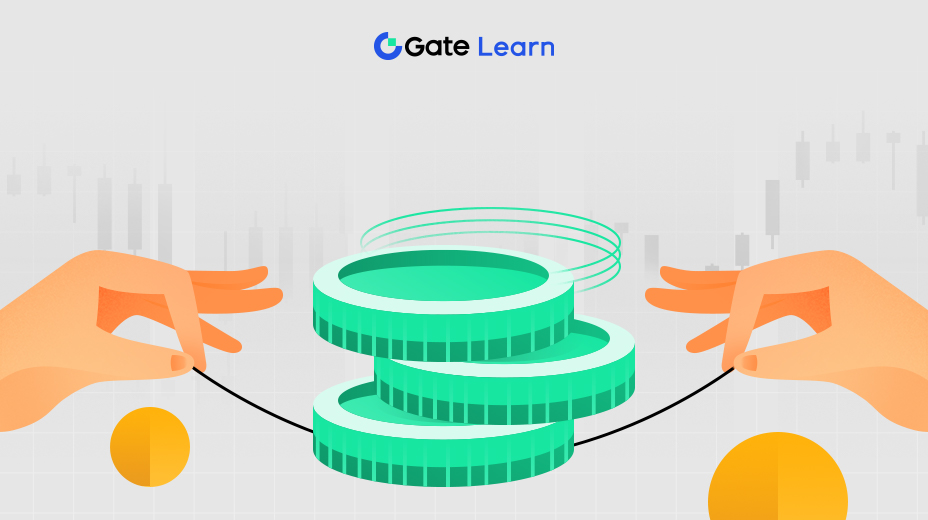ما هي الابتكارات الرئيسية في عالم العملات المشفرة؟
من المهم النظر في الصورة الكبيرة للعملات المشفرة. ظهرت العديد من الابتكارات على مر السنين، مثل التمويل اللامركزي والعملات غير القابلة للاستبدال والألعاب المشفرة. سنغطي بعضها في هذه الوحدة.

مقدمة
قطاع العملات المشفرة أوسع مما يبدو، وبعض الأشخاص يحبون أن يطلقوا عليه اسم الويب3، في السياق الذي يتضمن أكثر مما يعتبره الناس عادة أن العملات المشفرة والبلوكشين عنه. في بيئة العملات المشفرة والويب3، ظهرت مؤخراً ابتكارات جديدة على مر السنين، مثل ديفاي، الرموز غير القابلة للاستبدال، الحلول من الطبقة الثانية وديفاي اللعب. سوف نغطيها في هذه الوحدة.
Web3
Web3 هو تطور للإنترنت الذي نستخدمه اليوم وهو شبكة شفافة تمامًا ولامركزية، تعتمد على التقنيات الذكاء الاصطناعي والبلوكتشين.
بعبارة أخرى، يتعلق الأمر بتحديث الإنترنت لمنح المستخدمين السيطرة الكاملة على الأنشطة عبر الإنترنت. إنها إعادة تصميم للشبكة، التي توحد المبادئ الحالية إلى أعمدة جديدة مع التمييز، والبلوكشين، والعملات المشفرة.
تتوقعاتنا هي أنه في المستقبل، ستتغير بشكل جذري الطريقة التي يتفاعل بها الناس مع المنصات وبعضهم البعض على الإنترنت، وسيكون ذلك بسبب تلك الابتكارات الرئيسية في عالم العملات الرقمية: الديفي، التوكينات غير القابلة للاستبدال، ألعاب العملات الرقمية وحلول الطبقة 2.
DeFi
يُعطى اسم DeFi لمجموعة من الخدمات المالية والمنتجات، مثل القروض والتحويلات وأنظمة الدفع، التي تعمل على سلسلة كتل، وهي نوع من قواعد البيانات اللامركزية والثابتة. كقاعدة عامة، لا تتحكم هذه الحلول بوساط مثل البنوك أو غيرها من المؤسسات المالية.
يتم وصف وتنفيذ العمليات في بروتوكولات DeFi من خلال الخوارزميات والعقود الذكية، وهي برامج كمبيوتر تنفذ ذاتيًا. مثال عملي لتصور كيفية عمل واحدة منها هو قرض: يمكن للفرد أن يقترض الأصول من شخص آخر في تفاوض ند لتفاوض. شكل التحويل، والمبالغ، والفائدة، والضمان وجميع التفاصيل محددة مسبقًا في هذه العقود الآلية، وتُنفذ من قبلها. ليس هناك حاجة للجوء إلى بنك أو كيان آخر، مع رسومه الباهظة، للوساطة في العملية.
NFT
الـ NFT هو نوع من الشهادة الرقمية، تم إنشاؤها عبر تقنية البلوكشين، والتي تحدد الأصالة والحصرية للسلع الرقمية. بطريقة مبسطة، يجعل الـ NFT المرتبط بأي عنصر رقمي — صورة، صورة فوتوغرافية، فيديو، موسيقى، رسالة، منشور على شبكة اجتماعية، إلخ — هذا العنصر فريدًا في العالم، مما يولد ندرة حول العنصر ويفتح المجال لتسويق وتسويق يشمل المجمعين والمستثمرين الذين يهتمون بالاستثمار بأموال حقيقية في اقتناء الأعمال والأصول الرقمية.
في الأساس، يمكن ربط أي عنصر رقمي يعتبره الكاتب أو المالك ضروريًا لتحديد ملكيته بـ NFT كوسيلة لحماية أصالته استعدادًا للتسويق.
لعبة GateFi
الألعاب المالية هي القطاع الذي يضم الألعاب التي تكافأ أداء لاعبيها من خلال العملات المشفرة. عادةً ما يتم الدفع من خلال كسور من العملات الافتراضية الحصرية للعبة نفسها. معظم هذه الألعاب، التي تُشار إليها أيضًا بـ P2E (اللعب للربح)، تتطلب من اللاعبين القيام باستثمار أولي لشراء شخصيات افتراضية أو معدات أو أراضي. كلما تقدم اللاعب في اللعبة، يمكنه كسب عناصر إضافية. يمكن اعتبار هذه العناصر الافتراضية كشكل من أشكال الاستثمار التي تولد قيمة سوقية، والتي يمكن أن تعزز تداولها داخل المنصة وتخلق مصدرًا محتملاً للدخل للمستخدمين.
الحلول من الطبقة 2
الطبقة 2 هي إطار أو بروتوكول ثانوي حتى يتم بناؤه من نظام سلسلة كتل موجود. الهدف الرئيسي للطبقة 2 هو محاولة حل جميع صعوبات سلسلة كتل فيما يتعلق بسرعة المعاملات، فضلاً عن توسيع قدرتها على إجراء عدة تحويلات في نفس الوقت. وهذا يقلل أيضًا من رسومك. حاليًا، قضية التوسيع ونقص القابلية للتوسع هي مشكلة تواجهها سلاسل كتل رئيسية في السوق مثل إيثيريوم وبيتكوين.
بسبب هذا، حيث لا تزال هذه الشبكات الأساسية غير قادرة على تشغيل ومعالجة آلاف المعاملات كل ثانية، هناك خسارة هائلة لنمو النظام البيئي على المدى الطويل. وبهذه الطريقة، تم اعتماد حلول الطبقة الثانية، أو الطبقة 2، على نطاق واسع كوسيلة لمحاولة حل هذه المشاكل التي تؤثر على أكبر شبكات البلوكشين اليوم.
استنتاج
الصناعة بأكملها لا تزال في مراحلها الأولى، ولكن من الرائع مشاهدة مدى تطورنا حتى الآن. الديفي، الأموال الرقمية غير القابلة للانفصال، ألعاب العملات الرقمية، وحلول الطبقة ٢ هي الأمثلة الرئيسية على القدرة التحريضية لقطاع العملات الرقمية، لكن هناك المزيد كثير يُبنى في الوقت الحالي. بطبيعة الحال، سيستغرق بعض الوقت لنضجها، وسنرى تقنيات وحلول جديدة مبتكرة في السنوات القادمة.
تسليط الضوء
DeFi هو بدون إذن وهو بالفعل يغير الطريقة التي نتفاعل بها مع الخدمات المالية. إنه يقضي على الرسوم التي تفرضها البنوك والشركات المالية الأخرى عن استخدام خدماتها. يمكن للأفراد تخزين أصولهم في محفظة رقمية آمنة وتحويل الأموال في دقائق.
NFT هو شهادة رقمية، تم إنشاؤها عبر تقنية البلوكشين، تحدد الأصالة والحصرية للسلع الرقمية، مما يجعلها فريدة، ويولد ندرة حولها ويفتح المجال لتسويق يستقر فيه.
في ألعاب العملات المشفرة، تكافأ الألعاب أداء لاعبيها من خلال العملات المشفرة، في نموذج يُسمى أيضًا اللعب من أجل الكسب (P2E). تتطلب تلك الألعاب عادة استثمارًا أوليًا لشراء الشخصيات والعناصر، مما يولد قيمة سوقية.
تم إنشاء منصات الطبقة ٢ بالهدف الرئيسي لحل جميع صعوبات البلوكشين فيما يتعلق بسرعة المعاملات، وكذلك توسيع قدرته على إجراء عدة تحويلات في نفس الوقت.
الفيديو الرئيسي
مقالات ذات صلة





